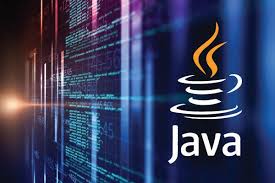
Contact Hours per Week: 6 (3T + 3L)
Number of Credits: 3
Number of Contact Hours: 96 Hrs.
Course Evaluation: Internal: 15 Marks + External: 60 Marks
OBJECTIVES OF COURSE
To review on concept of OOP.
To learn Java Programming Environments.
To practice programming in Java.
To learn GUI Application development in JAVA.
Course Overview: This course is designed to provide students with a comprehensive understanding of Java programming language and its application in object-oriented programming. It covers fundamental concepts of object-oriented programming (OOP) such as classes, objects, inheritance, polymorphism, encapsulation, and abstraction. Students will learn how to write, compile, and execute Java programs, along with developing graphical user interface (GUI) applications using Java.
Course Outline:
-
Unit I: Introduction to Object-Oriented Programming (OOP)
- Review of OOP concepts
- Characteristics of OOP
- Comparison between procedural and object-oriented programming
- Basic principles of OOP: class, object, abstraction, encapsulation, inheritance, polymorphism, modularity, message passing
- Features of object orientation: attributes, state, identity, operation, behavior
-
Unit II: Introduction to Java Programming
- History and versioning of Java
- Java Virtual Machine (JVM) and bytecode
- Writing simple Java programs
- Language components: primitive data types, comments, keywords, literals
- Control flow statements: break, continue
- Operators, casts, conversions
- Arrays
- Classes and methods: constructors, method overloading, static and final keywords,
thisreference, inner and nested classes - Inheritance, member access,
superkeyword,Objectclass - Dynamic method dispatch, method overriding, abstract classes, interfaces, packages, import statements
-
Unit III: Exceptions, I/O, and Threads
- Handling exceptions
- Input and Output operations in Java: file handling, standard streams, keyboard input
- Byte and character streams
- Buffered streams
- Keyboard input using buffered streams
- Introduction to Threads
-
Unit V: Events and GUI Applications
- Event handling using the Delegation Event Model
- Event classes and listener interfaces
- Adapter classes
- Introduction to Java Desktop Applications
- Overview of the Abstract Window Toolkit (AWT)
- Components of AWT: containers, components, canvas, frame
- Working with color, font, simple graphics, controls, layout manager, menu, etc.
- Teacher: SUKANYA KM

